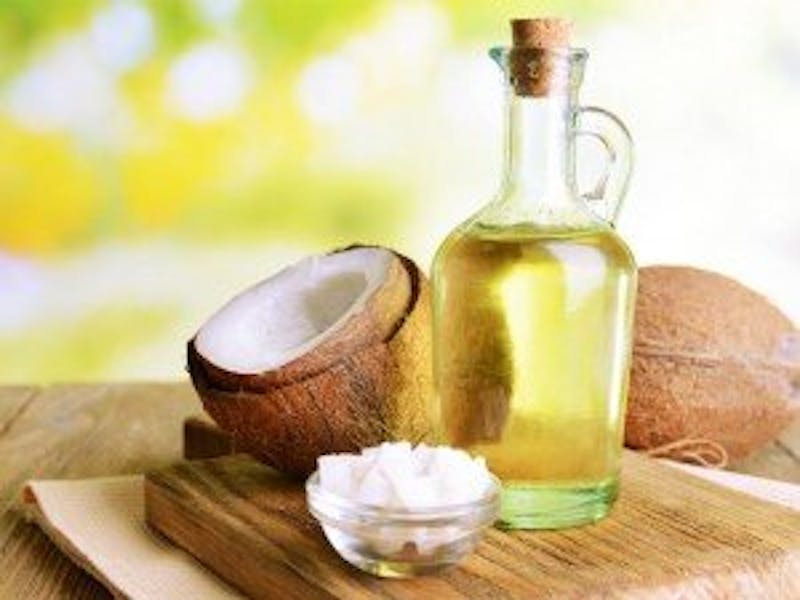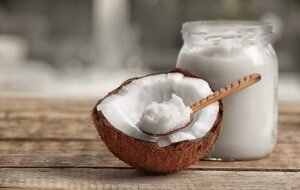
What is Oil Pulling and Does It Work?
A popular health trend talked about in both general health, and dental health arenas is a process called Oil Pulling or simply using coconut or other neutral oil as a mouthwash to improve a persons' overall health. Oil pulling has been in practice for thousands of years in some cultures as a folk remedy, but why has this age-old therapy resurfaced? Some say it may have something to do with the recent popularity and availability of non-hydrogenated coconut oil and other good saturated fats finding their way back into our shopping carts. When done for 20 minutes daily, this process of swishing is said to alleviate conditions such as headaches, migraines, asthma, acne, digestion issues, and more. Also, according to recent, but small test cases, "pulling" as it's sometimes called can have a positive effect on people’s oral health with noticeable results in a few as six weeks of swishing these magical lipids. Although most experienced health practitioners and skeptics would probably agree, this holistic approach will not stop headaches or detoxify the blood and is perhaps just another health fad. Still, it’s hard to ignore all the positive testimonials and hype surrounding oil pulling and oral hygiene. Are the results just a placebo, or do we have visual proof? Let’s take a closer look.
Oral Health Benefits
According to Wikipedia, oil pulling benefits oral health because the oil creates a protective layer that prevents plaque or bacteria from adhering to the teeth. With Wikipedia not being the best source for health information, I think we can immediately dismiss this claim as the reason for improving oral health. Although this may help fight plaque briefly, I don’t see this explanation holding up under over an extended period. Looking closer at the properties of the oil used, for example, coconut may provide a better idea of why pullers are boasting about healthy teeth and gums. We found a study from 2010, showing that coconut oil could help reduce inflammation. Interestingly, coconut oil has been shown to have anti-inflammatory properties when applied topically. The study showed that using virgin coconut oil to the inflamed tissue on rats found to have an anti-inflammatory effect as well as relieving pain. These anti-inflammatory properties, together with anti-bacterial qualities, could be the reason oil pulling can help promote healthy teeth and gums.

Why Coconut Oil?
Coconut oil is a superfood used to sustain many cultures in Asia and the Pacific Islands for centuries. There have been claims that adding coconut oil to your lipid regimen can help minor problems such as promote a healthy gut and cure fungal issues such as athletes’ foot to more substantial claims such as a cancer preventative. When looking closer at what is in coconut oil, it is easy to see why it would have other benefits to oral health. For example, coconut oil contains Lauric Acid, which is proven to be antimicrobial that can kill bacteria, such as Streptococcus Mutans, the bacteria in the mouth that leads to plaque buildup, tooth decay and bacteria gases associated with bad breath. Now we are getting somewhere, right?! Not so fast. Other tests found the same, if not better; results by using a Chlorhexidine mouthwash recommended and used by dentists. With coconut oil still popular health food supplement, both products are readily available at any drugstore. Oil pulling works exceptionally well for patients with braces or other forms of dental work because it loosens stuck-on food better than brushing.
Plaque and Gingivitis
Swishing with Chlorhexidine or coconut oil will most likely have similar results against fighting plaque and gingivitis. Still, one aspect of oil pulling seems to stand out–20 minutes per day. Swishing for 20 minutes seems to be the norm for pulling loyalists, which is much longer than most people would swish with regular mouthwash. This extended time and the viscosity of the oil should help remove more food particles than a quick 30-second shot of Listerine after brushing. Some say that oil pulling works best for people prone to gingivitis and together with frequent teeth cleanings it can reduce or stop bleeding during flossing. This revelation is especially exciting for women with pregnancy-induced gingivitis or people seeking a natural alternative due to tooth sensitivity or allergies.
How To Try Oil Pulling
If you would like to try yourself, it definitely can’t hurt, but in no way should replace recommended dental products approved by your dentist and the ADA. Here’s how to do it:
-
Put about a tablespoon of oil in your mouth.
-
Swish the oil around your mouth for 20 minutes.
-
Spit out the oil, and then brush your teeth.
If you use coconut oil, then you may have to let the oil soften for a few seconds because it maintains a solid form at room temperature. It is best to pull in the morning, on an empty stomach, to rid any bacteria before eating or drinking. As a time-saver, you can swish while in the shower; remember oil will cause havoc on your plumbing, so spit into a trashcan or disposable cup. It’s also important to spit out the oil and not swallow. You don’t want to consume all the bacteria you just removed, YUK! Happy pulling!
For general and cosmetic dentistry in Beverly Hills, please consider Arthur Glosman DDS.
